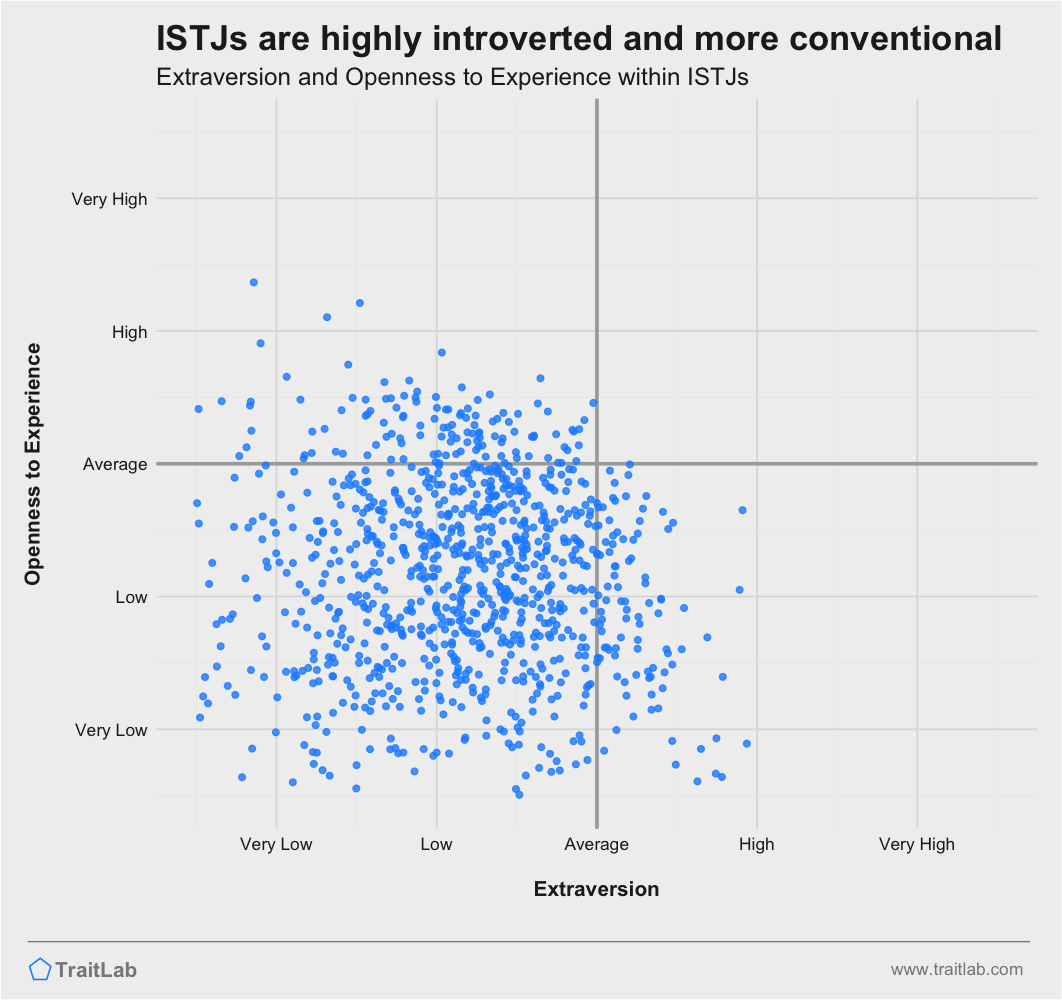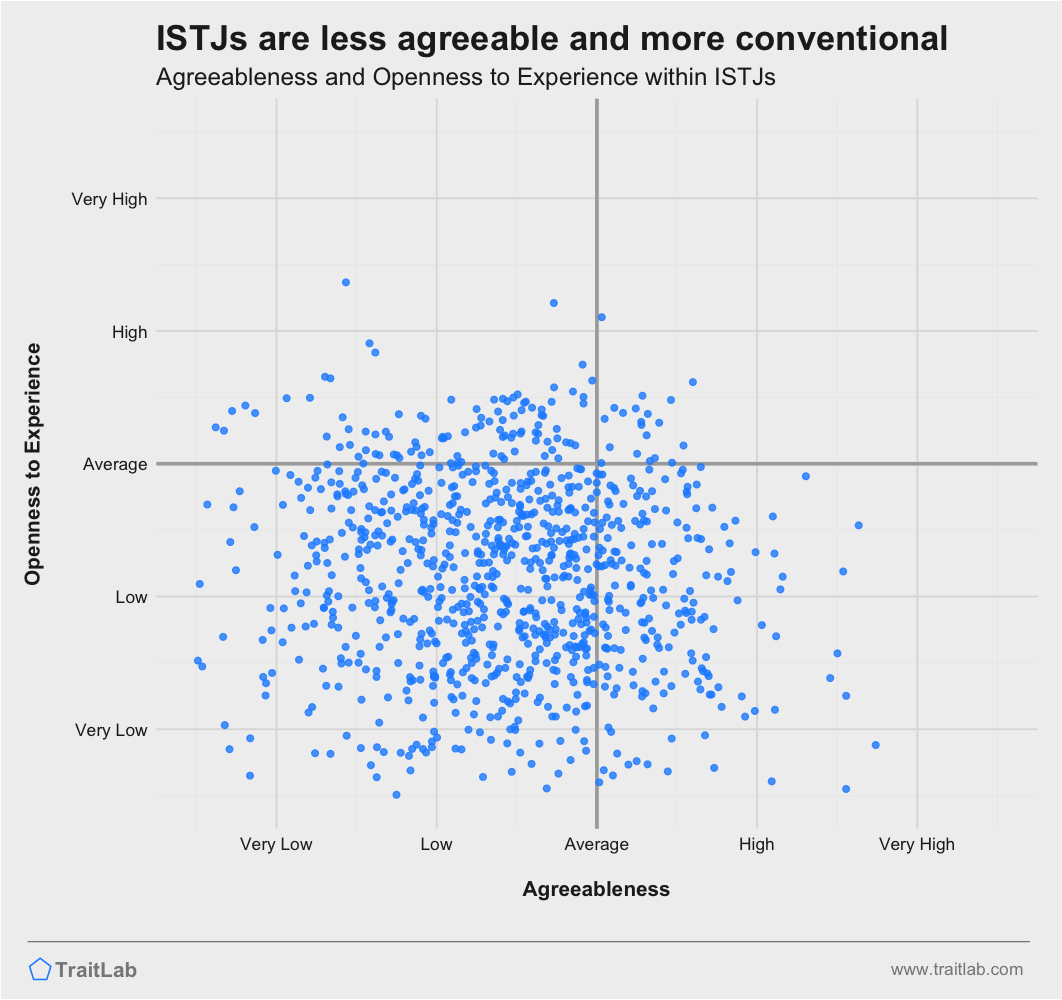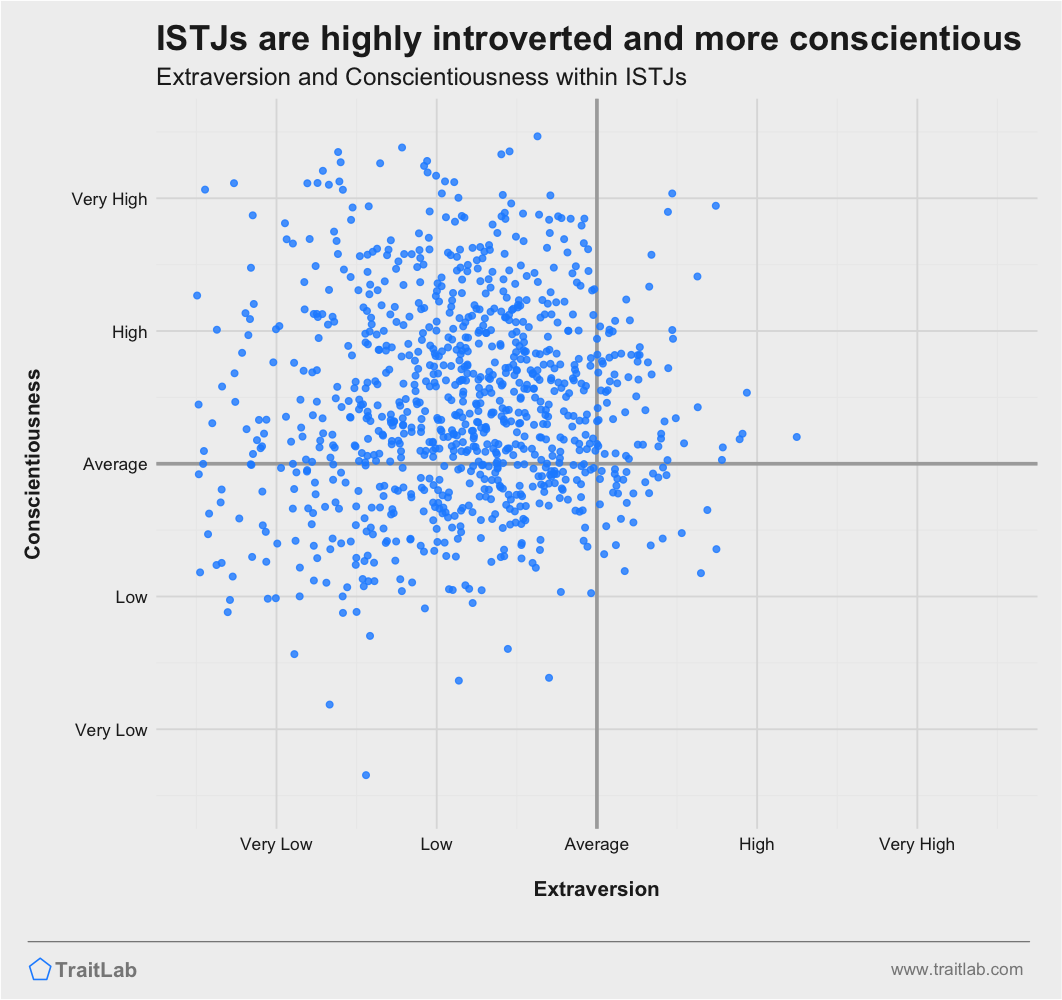See how the ISTJ's personality dimensions combine to yield several remarkable patterns
Reading time: 5 minutes

Gregory Park, Ph.D.
Author
ISTJs tend to have distinct patterns on the Big Five personality traits, and these patterns lead to a few common strengths among ISTJs.
ISTJs tend to be predictable and practical due to their low Extraversion and low Openness.

Extraversion and Openness are both related to seeking out different types of stimulation (social engagement vs. new information). ISTJs tend to score low on both of these dimensions, and they will have a high tolerance for the routine and mundane. They can be steady and predictable, and rarely need to shake things up and try something new.
ISTJs will often say what they mean and use very few words to say it.

High Openness is related to using more sophisticated, abstract language, whereas lower Openness (as seen in ISTJs) correlates with simpler, more concrete words and phrases. Combined with this, most ISTJs tend to score lower on Agreeableness, which influences our use of polite, friendly language. The lower Agreeableness of many ISTJs may be behind their more direct and frank communication.
ISTJs’ combination of lower Extraversion and higher Conscientiousness often results in a more serious, cautious, and principled nature.

In many different contexts, ISTJs will hold back their enthusiasm, preferring to analyze cautiously and carefully. They will often find it difficult to be spontaneous, silly, or impractical, even when the situation calls for it.
Understanding an individual’s unique strengths requires more than just knowing a personality type or Big Five personality traits. Even among ISTJs, every person has their own set of strengths that they use when they are at their best.

What are your true strengths?
Discover your personal strengths and lean into what you do best.
One easy way to learn about your own strengths is with the Strengths profile in TraitLab Plus.